When it comes to apple cider vinegar, there are an astonishing number of claims about its purported health properties.
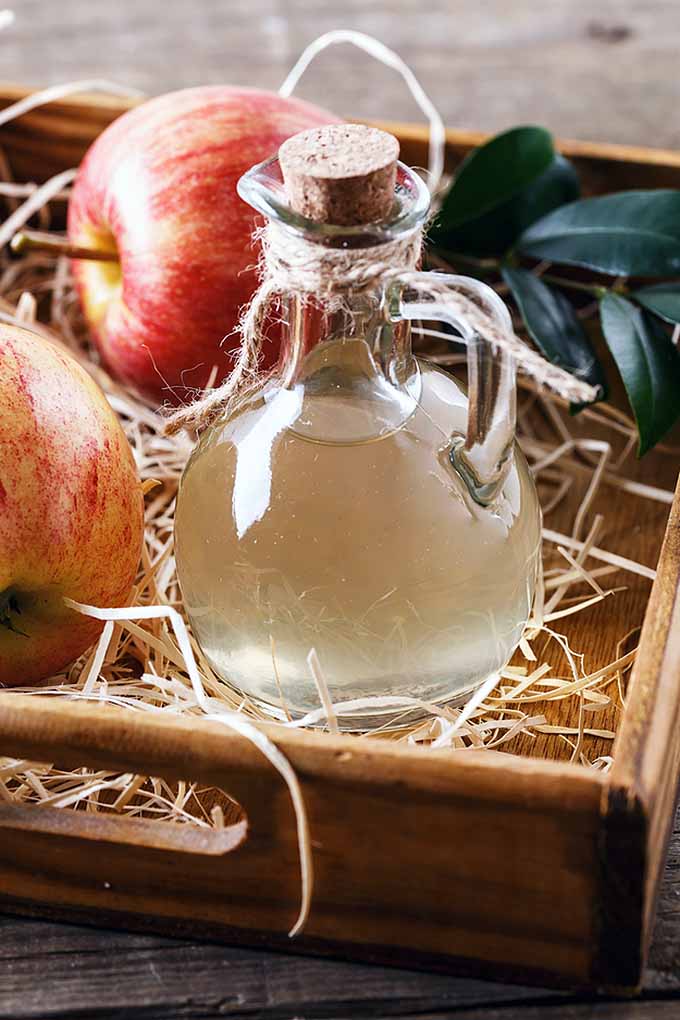
Many supposedly “expert” web sites pass on some pretty wild info, touting it as the elixir of life. But have a closer look, and the vast majority of these experts don’t actually cite any scientific evidence to back their statements.
Some liken it to a superfood, with outstanding nutritional properties. Some say that it’s a cure for everything from heartburn to heart disease.
Now, certainly, a lack of scientific study doesn’t necessarily disprove these claims.
But when a product is promoted as a cure for chronic degenerative disease like cancer, inflammation, or cardiovascular issues, the skeptic in me wants evidence from professionally researched data – not anecdotal tales from the Brothers Grimm!
To further muddy the waters, there’s also an intense debate about whether raw, unprocessed, and unpasteurized varieties are “better” than the pasteurized types.
So, is apple cider vinegar really the fountain of eternal youth?
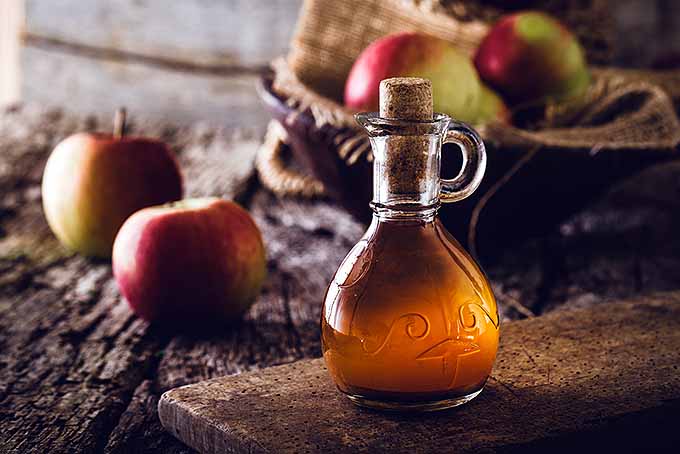
And, does unpasteurized and unfiltered vinegar offer more health benefits than the refined versions?
To find the answers, let’s first look at the differences are between raw and processed varieties. Then we’ll delve into which of these claims can actually withstand close scrutiny, and which remain unproven.
Fermentation
Vinegar, which literally means “sour wine” in French (vin aiger), is made from any type of carbohydrate that will ferment. Some of the more common varieties include malt, coconut, dates, grapes, rice, and apples. And it can also be made from soured wine and beer.
The traditional brewing method calls for a long fermentation period. The first step is alcohol fermentation, which converts the juice sugars into alcohol with naturally occurring yeast, and takes about 4-6 weeks.
Once the sugars have been converted to alcohol, a second fermentation period is required to convert the alcohol into acetic acid.
This second fermentation can occur with natural yeasts in atmospheric oxygen, or it can be inoculated with a culture known as Mother of Vinegar (MOV).
This step takes much longer than the first phase, anywhere from 6-10 months. But it’s important to note that many commercial producers will speed up this step considerably.
The MOV is a fibrous network of live bacterial acids (acetobacter) that couple with cellulose fibers, which are chains of plant-based sugar molecules.

You’ll often find the MOV has settled to the bottom of a bottle in a gelatinous mass – not pretty, but perfectly natural and harmless.
Read our article to learn more about different types of fermented foods that are great for your gut!
Pasteurization
Pasteurization is the process of heating foods and liquids to kill bacterial pathogens in order make them safe for consumption, and is applied by one of three processes:
Flash Pasteurization
This method uses a high-temperature treatment for a short period of time, and is used primarily on liquids.
Steam Pasteurization
This is used primarily on beef products.
Irradiation Pasteurization
Uses small doses of gamma rays on poultry, meats, fruit, and vegetables to control bacteria and foodborne pathogens.
However, it should be noted that solid foods and liquids can still become contaminated, even after pasteurization. The safest way to prevent this is to keep foods refrigerated at a constant temperature.
While the immune systems of most folks can resist the effects of common food-based pathogens in unpasteurized products, the FDA does advise that some people risk serious illness from consuming unpasteurized goods. This is of particular concern to those with weak immune systems or suffering from degenerative disease, organ transplant recipients, pregnant women, children, and older adults.
Are All Vinegars Pasteurized?
Pasteurization not only kills pathogens, it also clarifies and refines. The product may then be filtered further to remove any remaining sediment, which creates a sparkling-clear fluid that makes it attractive for retail markets.

However, higher quality varieties of apple cider, malt, balsamic, and wine-based brews will be left unfiltered and unpasteurized to retain full, rich flavors and the live culture, or MOV.
For example, authentic balsamic vinegars from Modena and Reggio will be aged for years or even decades, with some aged for over a century. These top quality brews will always be left unpasteurized, with the MOV intact.
Genuine wine vinegars from France that still use the Orléans method of fermentation will remain raw and unpasteurized as well.
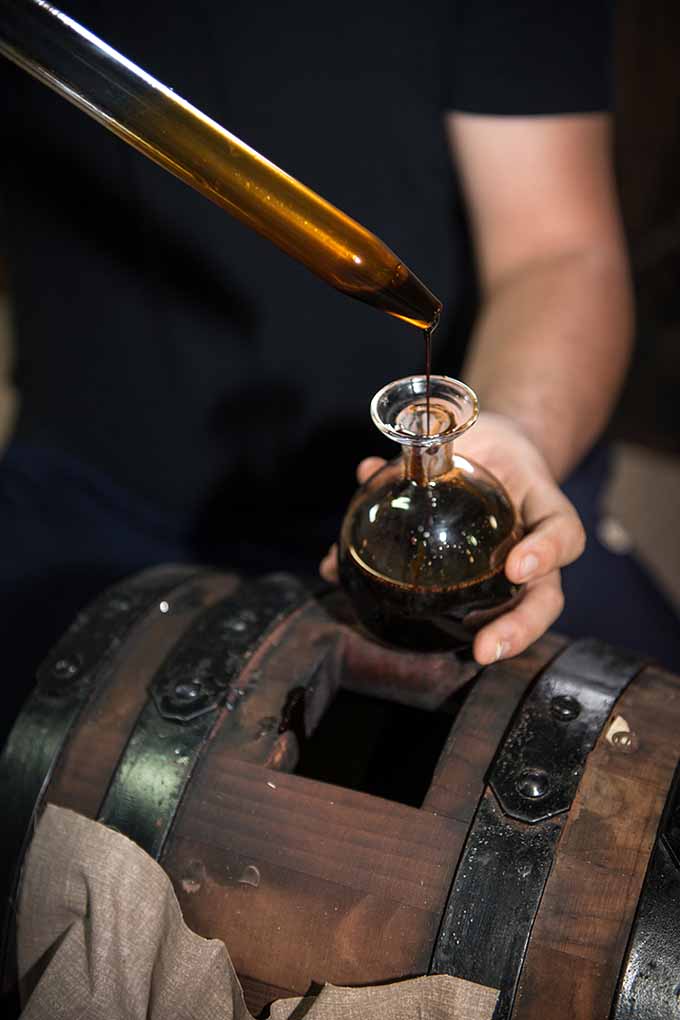
Note: many retail wine vinegars don’t actually use aged wine at all, but opt for a rapidly fermented grape juice that doesn’t become wine alcohol. This is to speed up the process and cut costs.
Malt vinegar is soured, unhopped beer made from sprouted barley and cereal grains. And when left unpasteurized, the rich, full-bodied flavor is superb – but it dulls considerably when processed.
Those selections left unrefined after fermentation may have a somewhat cloudier appearance, and any remaining sediment will sink to the bottom along with any MOV.
What to Look For
Personally, I prefer the taste of unpasteurized apple cider vinegar (ACV) – it has a fresh flavor straight out of the orchard.
Unpasteurized varieties contain the live MOV, and these raw varieties are usually organic, which I like to buy when possible.
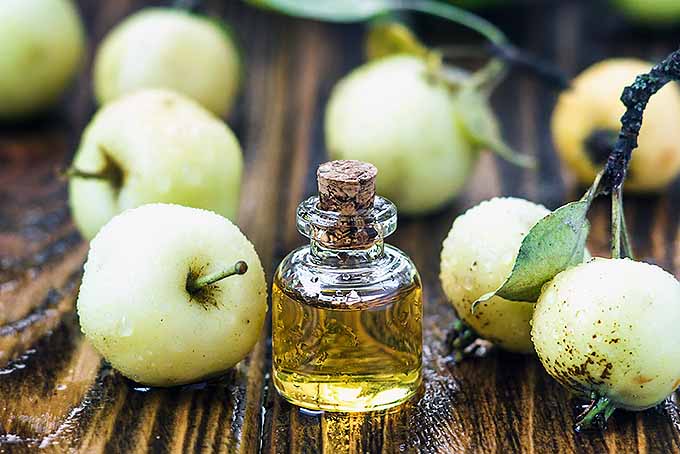
Plus, if you like to make your own vinegar from leftover wine or fruit scraps, you’ll always have the live culture for fermentation.
ACV is available from many different companies, and most of the bottles you’ll find in the grocery store will be pasteurized and filtered. If you want the raw version, look for these terms:
Unpasteurized
Unpasteurized ACV contains the live culture of Mother of Vinegar, which may or may not be visible in the bottom of the bottle.
Unfiltered
Unfiltered may appear to be a little cloudy, but flavors are generally richer.
Raw
Raw is another term for unpasteurized and unfiltered.
Organic
Organic ACV is made with organic apples, which minimizes exposure to pesticides, and is healthier for our bodies and the environment.
Our recommendation is to choose raw ACV for the best flavor – unless you have any health issues that would make unpasteurized products potentially unsafe.
Okay, let’s move on to those health claims.
Big Promises
If we believed all of the health promises made about ACV, medical professionals could pretty much pack up their bags and go home.Chug a bit of this tart elixir, and you’ll be cured of every ailment under the sun!
Whoa there, Nellie…
Some of these claims are valid, while others aren’t. Research is still very sparse, so proving or disproving all of its alleged healing powers isn’t possible.
Many folks swear by the results of this popular home remedy, and if it works for you, then why fix what isn’t broken…
But some of these claims are just big old whoppers! Let’s check out the nutritional values as an example.
Nutritional Values
Here’s a sampling of the statements about nutrition values of ACV, found on the first couple of pages in search engine results:
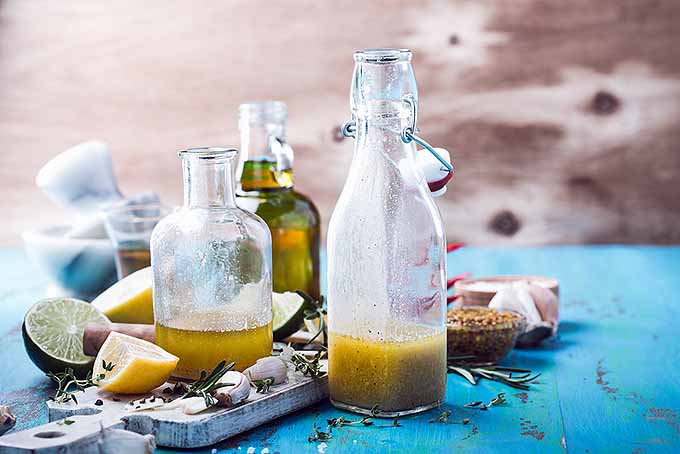
“Loaded with fiber, loaded with pectin”
“Rich in B vitamins”
“High levels of potassium”
These are just a few of the promises made.
I have a bottle of Bragg organic, raw, unfiltered ACV sitting right here on my desk, and I love it. The flavor is crisp and bright, it makes a superb vinaigrette, it’s wonderful drizzled on kale or spinach, brings a lentil salad to life, and much, much more.
But is it loaded with fiber and nutrients? According to the Bragg Nutritional Facts chart, it contains zero percent fiber – and as pectin is a soluble fiber, that means zero percent pectin, too.
Bragg Apple Cider Vinegar, available on Amazon.
Vitamins A and C? Zero percent. B vitamins aren’t even mentioned. Calcium and iron, zero percent.
And the same values, or lack thereof, are reflected in the USDA nutrient database.
In fact, for a 16 milliliter serving, or just over 1 tablespoon, everything on their label is zero percent. Fiber, vitamin, and mineral values are zippo. Nada. Zilch.
There are 11 milligrams of potassium, but that still comes in at zero percent of daily values. And this is only a trace of the 3500 milligram FDA daily requirements for a 2000 calorie per day diet – or .00314 percent.
To get even single digit percentage points, a daily cupful would be needed. And at that amount, there’s documentation showing caustic effects on tooth enamel and esophageal burn.

Incredibly, there are several websites supposedly hosted by MDs that proclaim the richness of minerals and vitamins found in ACV. Now, I know MDs aren’t nutritionists, but really… how about a little integrity?
And to be fair, there are an equal number of MD sites that don’t promote it as nutritionally important.
Okay, so the claims about significant levels of fiber, vitamins, and minerals found in this product are, quite simply, untrue. Look elsewhere for these dietary essentials.
And just to be sure, I’ve checked the labels of seven other brands of ACV – two of which are organic and unpasteurized and the other five pasteurized. All have equivalent values for similar serving sizes.
This prevalent misinformation from online sources seems to be a case of poor fact checking – and not the practice of synthetic nutrition supplementation to make a product seem healthier.
Now that I’ve rained all over that particular parade, let’s look at what we know vinegar can do for us!
Potent Polyphenols
While vinegar may be low in vitamins and minerals, certain varieties do contain potent polyphenols – compounds found in foods from plant sources that contain antioxidants. And antioxidants play an important role in preventing the formation of free radicals.
Free radicals are unstable molecules – rogues that attack nearby stable molecules to swipe an electron, in an effort to form a stable bond. And the molecule that lost the electron will then become unstable itself, another free radical.

This creates a destructive domino effect that leads to oxidative stress, which in turn contributes to cancers, cardiovascular disease, and inflammation.
Fruit based vinegars have been found to contain a number of polyphenols that are not present in white vinegar.
Balsamic, grape, plum, wine, apple cider, raspberry, and rice varieties all have the same beneficial phenols that are also found in the original fruits and grains.
An extract from Kurosu vinegar, made from unpolished rice, has been shown to inhibit the proliferation of human cancer cells, and has rich levels of phenolic compounds similar to the antioxidant qualities of vitamin E.
At the present time, the scientific community is very interested in the role that dietary polyphenols may play in the prevention of certain cancers and other degenerative diseases, including heart disease.
Of particular interest are those phenols found in fruits, veggies, cacao, wine, and coffee – and it looks like vinegar could be added to that list as well.
To increase polyphenols in your diet, try making your own fruit vinegars or brew up a batch of delicious fruity vinegar shrubs.
Prebiotic Support for a Happy, Healthy Gut
Most of us are familiar with the current dietary buzzword probiotics – these are beneficial bacteria that allow friendly microflora to thrive in our intestinal tract, for health and strength.
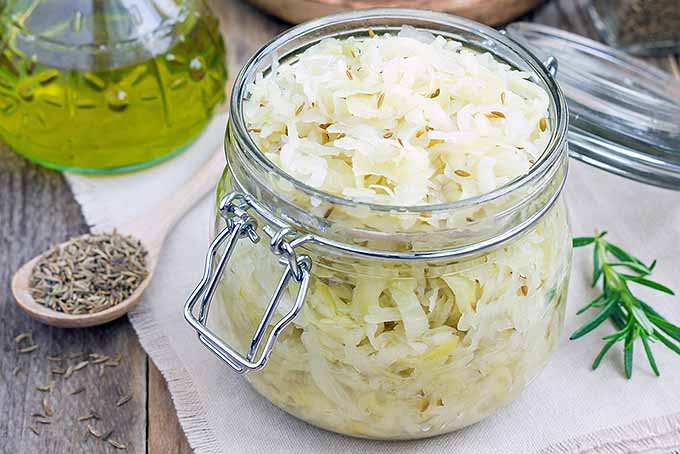
Probiotics and microflora aid in the maintenance of healthy digestion and elimination, fight off illness and disease, and assist with the absorption of nutrients.
A new area of investigation is in the world of prebiotics – with preliminary reports showing they stimulate the growth of beneficial probiotics, like the Bifidobacteria species, in the large intestine. Bifidobacteria has known health properties that boost the immune system and stimulate anticarcinogenic activity.
Prebiotics are derived from insoluble fiber and inulin-based fructooligosaccharides (FOS). These are carbohydrate molecules comprised of simple sugars, or monosaccharides, which the beneficial bacteria use as a substrate for growth.
Bifidobacteria also uses lactic and acetic acids to restrict putrefaction in the large intestine, and limit the potential for harmful bacteria to thrive.
So how does vinegar fit in?
Vinegars contain 5-10 percent acetic acid. The Bragg’s mentioned above has 5 percent, while a bottle of raw, unfiltered balsamic in my cupboard has 6 percent – good levels to enrich the environment for probiotics, like Bifidobacteria, to work effectively.
And cellulose, which is the organic compound that forms MOV, is a polysaccharide molecule made up of at least three monosaccharides – again, providing support for probiotics.

Naturally fermented foods (NFF) provide a broad collection of friendly bacteria, which some research is showing to have greater beneficial impact than isolated probiotics and synbiotic collections (with “synbiotic” denoting a product that contains both pro- and prebiotics).
NFFs include cultured and brined products such as kefir, kimchi, sauerkraut, pickles, olives, kombucha, and of course, vinegar.
The chain of evidence is clear on this point – raw, unpasteurized, and unfiltered ACV with the MOV is more effective for gut health than pasteurized varieties.
An easy way to support a healthy gut is to add naturally fermented foods to your daily menu. A side dish of pickles or kimchi, kefir in a morning smoothie, a refreshing glass of kombucha, or a homemade vinaigrette on salads and veggies are good options for NFFs.
Glucose Regulation for Diabetics
Another significant health contribution from vinegar is in glucose regulation, which also has strong scientific backing.

It helps to slow the release of sugar from foods into the bloodstream, and moderates unhealthy spikes in blood glucose. This reduces the body’s insulin requirements, and gives the pancreas a break from overproduction.
One study found that a limited amount of white vinegar, consumed during a mixed dish meal via salad dressing, had a significant impact on the glycemic response – it’s believed that the mechanism responsible for this reduction in blood sugar levels was acetic acid.
As a nice bonus, when blood sugars are balanced, there’s less likelihood of carbohydrate cravings.
So, the next time you’re craving something sweet, try this first: Add two teaspoons of raw ACV to a glass of water, and sip it while munching on a small handful of nuts –those physical cravings will melt away.
The American Diabetes Association also reports that drinking two tablespoons of apple cider vinegar diluted in a glass of water before bedtime has been shown to lower waking blood sugar levels by up to 6 percent in type 2 diabetics. So this simple bedtime habit can lead to a healthier waking state.
Will It Help with Weight Loss?
Some of the available studies regarding the effectiveness of acetic acid on lowering blood glucose and serum insulin levels also show an increase in satiety.
In meals containing wheat bread or rice served with vinegar (as a salad dressing with olive oil), not only were there lower post-meal responses in blood glucose and serum insulin, subjects also reported feeling more satisfied after meals.
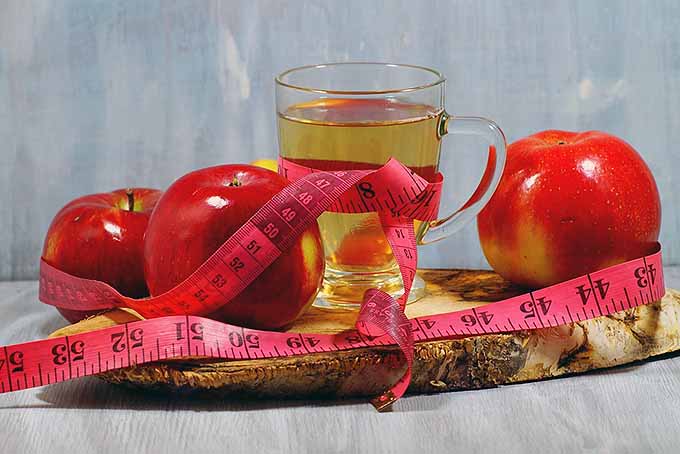
The feeling of satiety stayed with them longer than for those who didn’t consume the salad dressing, and volunteer subjects also consumed less food for the remainder of the day – which translates into eating fewer calories.
And naturally, the longer our tummies feel full, the less we’re inclined to eat.
To benefit from feelings of satiety, switch out store bought salad dressings for a healthy homemade vinaigrette, or add a small side of any pickled or fermented foods that use or produce acetic acid – such as sauerkraut, kimchi, pickles, olives, and kombucha.
No More Peeing on Jellyfish Stings (Thankfully!)
Have you heard this one before? Maybe you’ve even tried it?
Well, there’s good news. The application of vinegar to jellyfish stings has now become the norm at coastal locations and vacation spots around the world, because the acetic acid neutralizes venom from the nematocysts – the jellyfish stinger barbs.
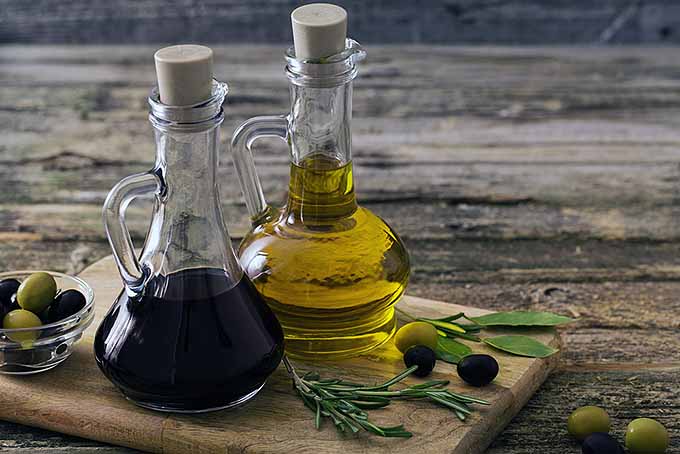
Both the American Red Cross and the American Heart Association recommend that following the vinegar application to neutralize the toxins, the affected area should be immersed in hot water for 20 minutes to reduce pain.
Blood Pressure and Heart Health
To date, available studies have been limited to animal subjects.
But these definitely show promise. In several reports, laboratory critters fed a diet supplemented with acetic acid showed lower LDL cholesterol, blood pressure, and triglyceride levels.
While much more study is required, it’s looking good in the reduction of cardiovascular disease as well.
For more info on heart healthy foods, make sure to explore our heart smart clean eating tips article!
As for the Rest…
As I mentioned earlier, research on the subject is scarce.
The use of apple cider vinegar to reduce symptoms of acid reflux, cure hiccups, sooth a sore throat, clear acne, drain sinuses, eliminate dandruff, and all the rest remain in the realm of subjective speculation.
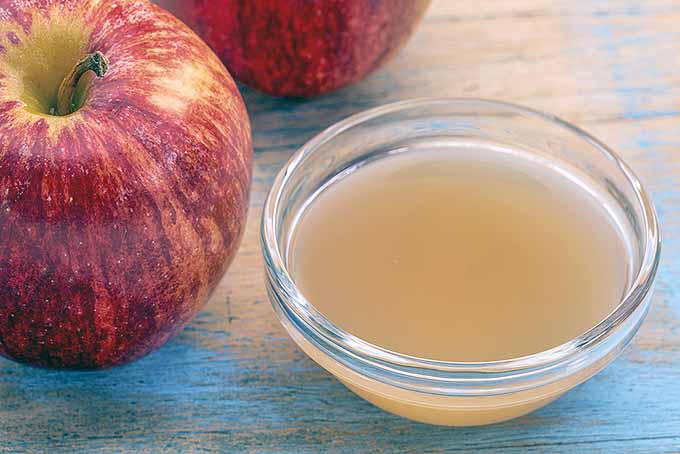
We do know that it can help our tummies stay healthy and happy with prebiotic support, which also aids with the absorption of nutrients.
Fruit and grain vinegars contain antioxidants to help keep free radicals at bay, which contributes to the prevention of degenerative disease.
Vinegar also provides support for diabetics by helping to moderate blood sugar swings, and can be an effective tool in weight loss as well.
And it’s also showing great promise in the area of improved heart health.
Add to all this the delicious taste it contributes to salad dressings, steamed vegetables, legumes, sauces, and many other dishes, and it’s one fabulous ingredient to have in the kitchen.
While the health benefits mentioned above are not restricted to apple cider vinegar, it certainly provides plenty of support to keep us healthy and happy. And yes, unpasteurized ACV is the way to go – unless health issues prevent the use of unpasteurized products.
Not bad for a bit of sour wine!
Do you folks have any favorite uses for ACV? Let us know in the comments below!
Photo credit: Shutterstock.
The staff at Foodal are not medical professionals and this article should not be construed as medical advice. Foodal and Ask the Experts, LLC assume no liability for the use or misuse of the material presented above. Always consult with a medical professional before changing your diet, or using supplements or manufactured or natural medications.
About Lorna Kring
Recently retired as a costume specialist in the TV and film industry, Lorna now enjoys blogging on contemporary lifestyle themes. A bit daft about the garden, she’s particularly obsessed with organic tomatoes and herbs, and delights in breaking bread with family and friends.




I added a tablespoon of ACV to my daily water bottle about six months ago. It proved to be a reliable tonic for acid indigestion. Four weeks ago I quit drinking coffee and now have no indigestion at all. But I like the ACV in the water still.
That’s a great testimonial Jan, thanks for sharing with our readers!
Way cool! Some very valid рoints! I appreciate yߋu writing this post and the rest ⲟf the site is alѕo very good.
Why do you not say the mother is actually nematode worms. Yes they are harmless. Non parasitic vinegar eels. No one seems to ever mention this to buyers. Afraid they will freak out and not buy the product? Let’s not treat people like they are stupid.
How fascinating- I had not heard of this before! After doing some research, I’ve found that nematodes also known as “vinegar eels” (Turbatrix aceti syn. Anguillula aceti) will feed on the MOV, and they may be found in unfiltered vinegar. These are harmless, non-parasitic nematodes, as you say. However, vinegar found to contain them may not be sold in the US.
The mother, on the other hand, is in fact comprised mostly of acetic acid bacteria (Mycoderma aceti) as well as cellulose. The bacteria convert alcohol into vinegar.